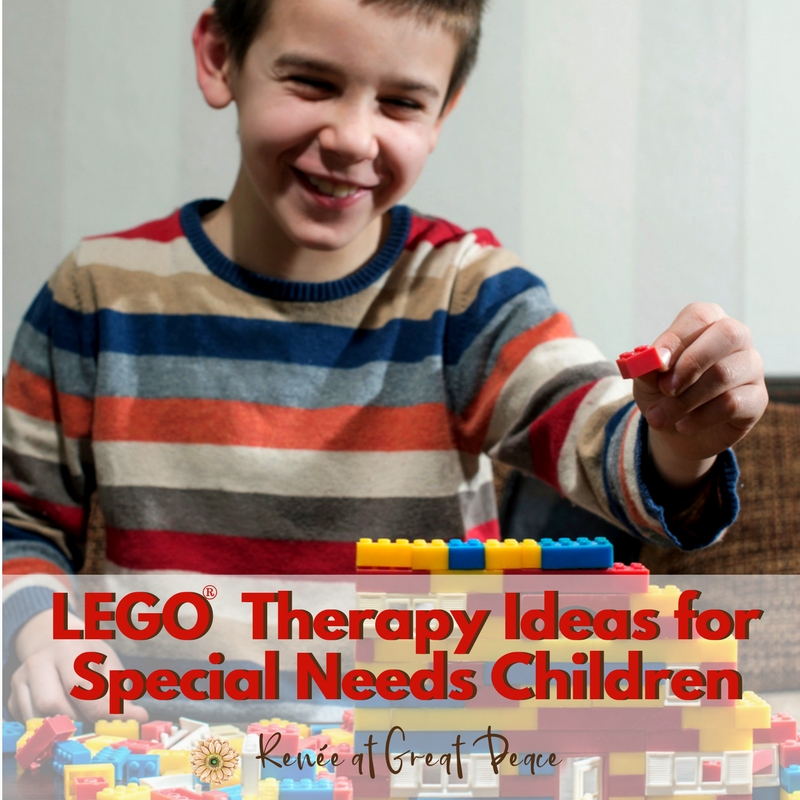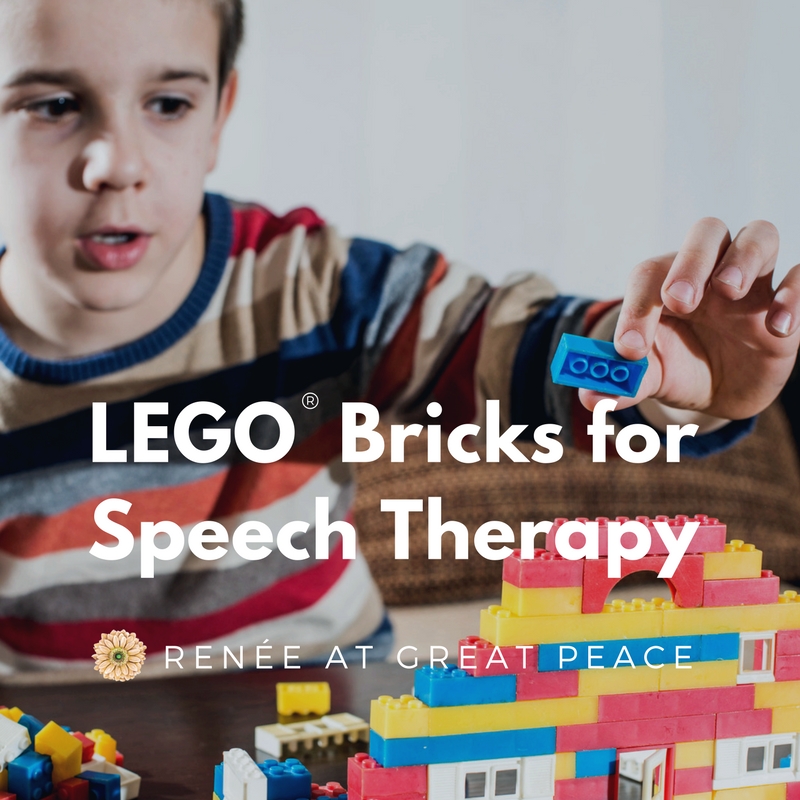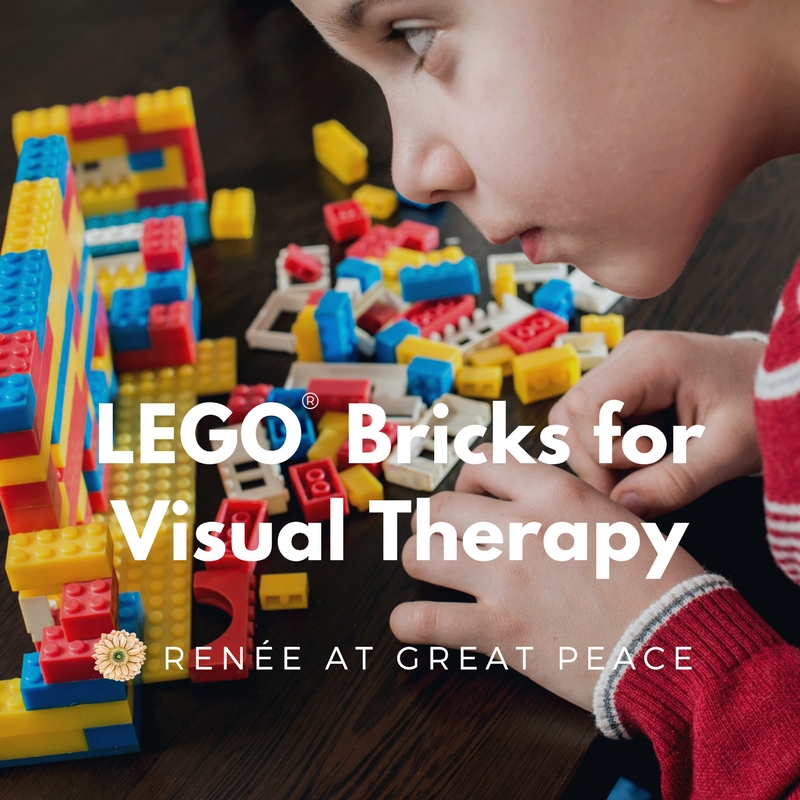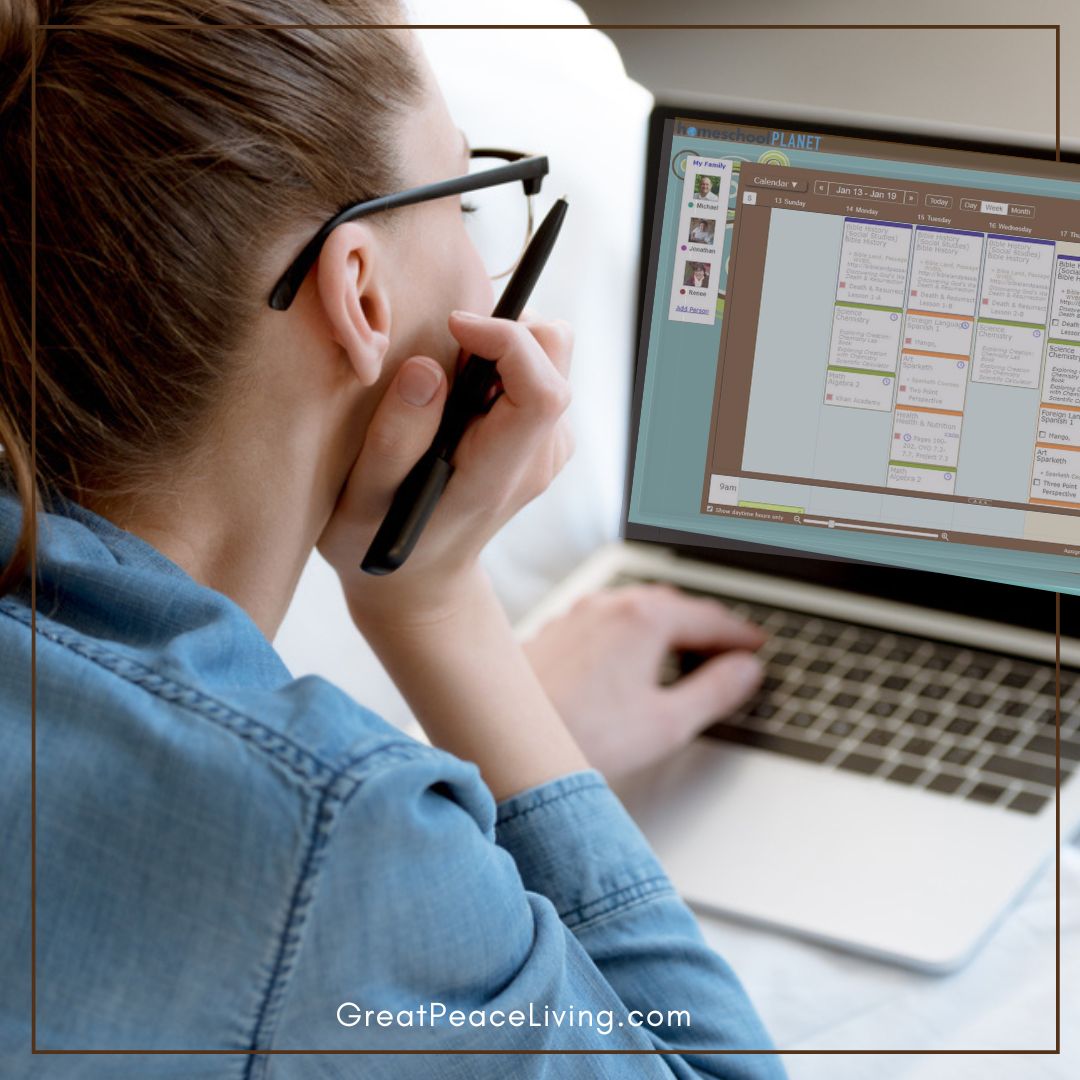LEGO® Bricks are such a versatile toy. We all know that they make great educational tools because kids love them so much they don’t realize they are learning while playing with them. Additionally, they make great tools for LEGO Therapy for fine, and gross motor development. They also can be used for vision training, speech training, and so much more. These versatile toys, the simple LEGO Bricks are being used by therapists and moms alike to help special needs children.
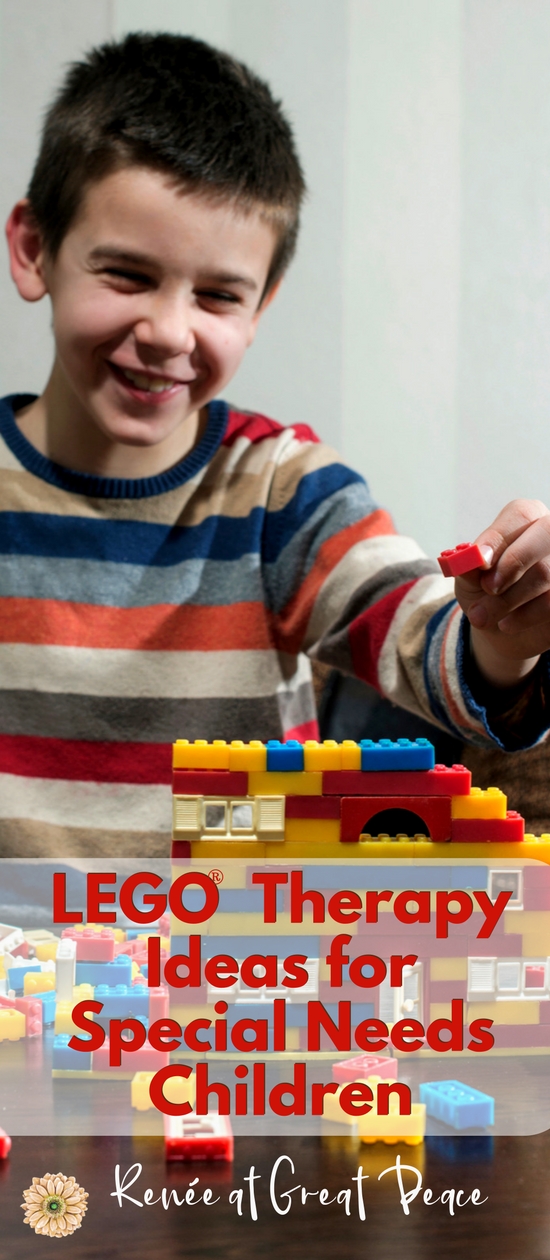
This post contains affiliate advertisement links to 3rd party sites.
I reached out to a friend of mine, Colby, to ask her if she would share some tips for using LEGO for therapy purposes. She worked as an Occupational Therapist for years before choosing to be a stay-at-home mom, homeschooler, and support her 4 children. She shares the following general information from her role as special needs mom. 
Disclaimer: This article is not meant to provide medical or therapeutic advice, your doctor and therapist will prescribe your child’s therapy program. You should always follow all the precautions your doctor or therapists provides, as well as using just good old common sense; like never leave a child who mouths toys alone with small pieces.
Tips for Using LEGO Bricks
for Special Needs Therapy
LEGO Blocks! Who doesn’t love them, right!? The popular, perfect, open ended, brain building, play for hours toy! These toys are a great fit to use with your kiddo that is working on therapy goals, too! I used to practice Occupational Therapy, before I stopped to stay at home with my kiddos, and I also have a couple of my own kiddos with therapy needs. So, Renée asked me to share some ideas about how to use
LEGO Bricks with kiddos who might have some therapy needs!
▬ For children who need lots of proprioception or “heavy work” to help with calming, you could make an obstacle course around your living room and place LEGO Bricks along the way and at the end have a model for your kid to copy. This will help get that heavy work that is so calming and work on vision and fine motor all at the same time!
▬ Walking like different animals is a another great way to get that calming work in; walk like a bear to go get your brick, bring it back like a snake, then build something fun at the end.
These activities are also a great way to get siblings to interact, it’s an activity everyone can enjoy!
▬
If your kiddo is working on stairs you can place a
DUPLO Bricks,
or the really over sized off name blocks, on each stair for them to put in their bag or hand to you as they go up the stairs. Then, let them build something when they reach the top.
▬ Working on reaching overhead? Place LEGO or DUPLO Bricks at the appropriate height and ask your child to collect them. Then, when they’ve collected them all, they’ll have a perfect natural break to stop and build something for a bit!
LEGO Bricks for Speech Therapy & Language Development
LEGO Bricks are great for speech and language development. Even though I’m not a speech therapist, I’ve had kids in speech therapy and I can tell you some fun things we’ve done. LEGO Blocks provide a lot of language learning opportunities.
- They are great for working on naming colors.
- Numbering the LEGO Bricks in a tower
- Identifying the different sizes of LEGO Bricks
- When they have built their LEGO World there is so much to talk about, especially if you have plenty of LEGO Minifigures to rule your LEGO World.
What’s more fun and motivating to talk about than your own LEGO World, where for a change your kiddo can be in charge?

LEGO Bricks for Visual Therapy
▬ Need to focus on visual work? While I usually encourage my own kids to toss the instructions and build whatever they can imagine, when working on visual spatial issues, using those instructions can be a good work out.
Start simple and make sure you give your kiddo the appropriate amount of help. I love those small packages of
LEGO Building Kits, because they typically start out quite simple.
▬ Working on Visual Memory?
Make a simple model, let your child study it, then hide it and have them build the same thing. Start simple, two or three blocks and work up. Make sure to offer a limited numbers of bricks, especially in the beginning.

Troubleshooting LEGO Therapy Pitfalls
• What about kids that don’t have the fine motor skills needed to build with LEGO Bricks? You can always try the larger DUPLO Blocks. These can be great for a child with fine motor difficulties to pick up.
Then, as your kiddos fine motor skills progress you can let them use the
LEGO Juniors.
• What about a kiddo that still struggles with handling the larger blocks, but they still want to play with bricks like their friends? You could let them choose which block goes next and tell you where to place it.
• Learning how to communicate politely what they need and want, is a great skill for kids who will be dependent on others for care as they grow.
• For some with augmentative communication devices, it would be great practice using their device to tell you which block goes next. You can make it as simple as them just choosing the color or if they are able, they could choose the length of block, 2×2, 2×4, etc. You may want to sort the blocks out into categories, so that all the red blocks are 2’s, all the blue blocks are 2×4’s, and so on.
There are so many ways to use this versatile toy to help your kiddo grow and develop as they work on their therapy goals. I hope some of these ideas help you and your kiddo stay motivated to keep moving forward and most of all help you have some fun together!
— Colby Burrows, OT, Retired

Isn’t Colby great? She has such a sweet demeanor and it’s such a blessing to have her as a friend.
What about you? What is your own child’s favorite therapy technique? Tell me in the comments below.

If you are researching LEGO Therapy techniques be sure to check out these books for LEGO Therapy.
by Simon Baron-Cohen, Georgina Gomez De La Cuesta, Daniel B. LeGoff, and GW Krauss
by Daniel B. LeGoff
You May Also Enjoy
You May Find This Helpful As Well
